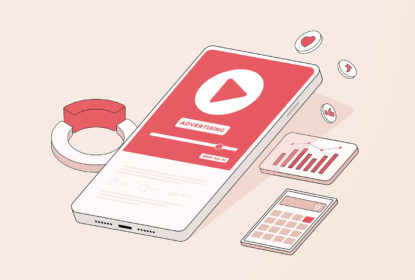The goal of every brand, regardless of industry, should be to solve the problem consumers face. Sometimes that means pointing out a problem your audience may not have known they had. Many industries and businesses have begun to utilize design thinking in order to find the most effective and creative ways of problem-solving.
Design thinking is not your traditional form of problem-solving. It’s a way for businesses to adapt their culture by injecting creativity and innovation into their brainstorming processes. Design thinking is not beholden to designers either. The arts, literature, music, science, engineering, business, marketing, etc. all have great innovators who have applied design thinking to their practice.
Global leading brands, such as Google, Apple, GE, and more, have all adopted the design thinking approach. Furthermore, this process is being taught at some of the most prestigious universities all across the world. This begins the question, “why is design thinking so popular?”
ARYU Advertising is a leader in the world of digital advertising. We understand how important finding creative and practical solutions to problems can be. Design thinking is one of many ways we create effective plans and solutions. Today, we would like to help you better understand this practice and how it can help your brand.
What is Design Thinking?
At its core, design thinking seeks to combine creativity and structure to solve problems. It’s a process that aims to create solutions using a broader, more open way of thinking. Through design thinking, you are better able to understand your target audience, helping you create alternative strategies that break away from your traditional way of thinking. You will be able to discover solutions that weren’t readily apparent to you previously.
Understanding people is the main focus. You have to understand why someone is using your product or service, what they are using it for, when they will use it, and much more. It involves a hands-on approach to brainstorming, prototyping, and experimenting.
The main goals of design thinking are to understand your audience better, challenge previous assumptions, and redefine your problems.
Google established three core principles to design thinking, also known as the 3 E’s: Empathy, Expansive Thinking, and Experimentation.
Empathy
As we have already touched on briefly, an incredibly important aspect of design thinking is understanding users. While it’s great to create a product or service that breaks the mold, it is even better to create one that is useful to people. You shouldn’t be creating a product without asking yourself how this improves the lives of users. Ask yourself:
- Who is going to use my product or service?
- What are they going to use it for?
- When will they use it?
- Why do they want to use it?
By putting yourself in the shoes of your users, you will be able to create a more meaningful solution.
To collect this information, you must do the research. If you can, reach out to your target audience, the people who intend to use your product or service, and ask them about their experiences with your brand or your competitors. Ask them how they felt about their time using the product.
By conducting this research, you will be able to empathize with your audience in a way you couldn’t before.
Expansive Thinking
Essentially, this is your ideation stage of design thinking. This is the brainstorming step. Once you have been able to put yourself in the shoes of your users, now it’s time to create a plethora of potential solutions. Far too often, people look for that one perfect answer to their problem. While it may seem nice, it hinders your way of thinking. Your thought process is closed off to the possibility of countless innovative ideas.
Take a step back and review your problem. Look at it from every possible view. Try to create as many potential solutions as possible. We know that the majority of them won’t work, but you may discover that there are more solutions than you originally thought. Challenge your creative team to explore radically new possibilities. While not all of these big ideas are plausible, they help you push the boundaries of your problem-solving process.
Experimentation
Now comes the prototyping stage. After your thorough and expansive brainstorming, you must begin the process of figuring out which ideas work and don’t work. You should build a prototype or early stage of each product or service. Begin experimenting with these prototypes to gather data to help you decide what ideas should be continued, fine-tuned, or completely thrown away.
You can either test your prototypes internally or release a beta test to see if your users truly enjoy it. The feedback you receive from your target audience informs you whether or not you were able to truly empathize with them.
Why It Works So Well
As humans go through life, they naturally develop certain patterns and ways of thinking. These patterns are known as schemas, which are sets of information and connections between things, actions, and situations that are activated in your mind once you come in contact with environmental stimuli. They help us quickly apply the knowledge we have previously collected to similar situations. While this process can be extremely helpful when you need to quickly act in a given situation, it also hinders you from developing and applying new ways of understanding and solving problems.
The information contained in a single schema can be vast. However, when a stimulus matches with a schema, your mind automatically brings up the same pattern of thinking. You aren’t able to craft new solutions nor see the problem from a different perspective. Design thinking forces you to think outside the box and develop more engaging and innovative ways to solve a problem.
Many brands across the world practice the process of design thinking in order to develop a more innovative and creative way of problem-solving that puts you in the shoes of your user. ARYU Advertising understands the importance of making your user your top priority, which is why we value the process of design thinking.










